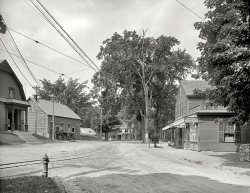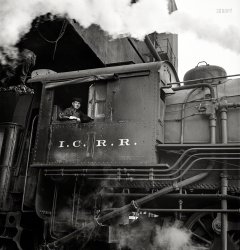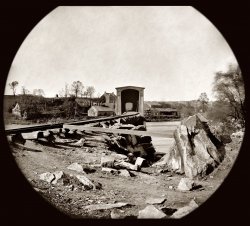
MAY CONTAIN NUTS

Search Shorpy
SHORPY ART

Framed or unframed, desk size to sofa size, printed by us in Arizona and Alabama since 2007. Explore now.
Join and Share
Ad-Free Shorpy
Shorpy is funded by you. Patreon contributors get an ad-free experience.
Learn more.

Recent comments
- Details, Details
- What's that building to the left of the tower?
- Coal Barges
- Bromo-Seltzer
- Inner harbor
- The Basin
- What a headache!
- Giant stepladder?
- Baldwin 62303
- Baldwin VO-1000
- Cold
- No expense spared
- Tough Guys
- Lost in Toyland
- And without gloves
- If I were a blindfolded time traveler
- Smoke Consumer Also Cooks
- Oh that stove!
- Possibly still there?
- What?!?
- $100 Reward
- Freeze Frame
- Texas Flyer wanted
- Just a Year Too Soon
- WWII -- Replacing men with women at the railroad crossing.
- Yes, Icing
- You kids drive me nuts!
- NOT An Easy Job
- I wonder
- Just add window boxes
Member Photos
The Shorpy
Print Emporium
Print Emporium
Search Shorpy
Search results -- 30 results per page
- Over Omaha: 1938
- ... north towards what is now Interstate Highway 480. The railroad tracks in this 1938 photo, almost every building, and the tall ... of the founder. A.Y. himself was in the Civil War, shot twice, and he was shot a third time, later in life, in a home ... Posted by Dave - 06/24/2019 - 12:59pm -
![Over Omaha: 1938 November 1938. "Omaha, Nebraska." A bird's-eye view of, among other attractions, Tri-City Barber College. Photo by John Vachon for the Farm Security Administration. View full size.
Found one!The Ford Bros. building (in the upper right corner of the photo) still stands at the corner of Dodge & 11th streets.
Graybar Electrical SupplyContinues to thrive all over North America, and is still employee-owned.
An early Ford spottedOne of the billboards advertises the film "Submarine Patrol," which was directed by John Ford for 20th Century Fox, the last Ford-directed film before a run of seven box-office or critical successes in a three-year period that would make him a legend.
Much Has ChangedMy 1940 Omaha City Directory places the barber school at 1302 Douglas Street. Virtually everything in this photo is now gone.
Much Has Changed IndeedI'm glad EADG found the barber school at 1302 Douglas Street, because I found the Arcade Hotel at 1215 Douglas (reference: https://history.nebraska.gov/collections/arcade-hotel-omaha-neb-rg3870am). Since hlupak604 identified the Ford Bros. Van & Storage building still standing at Dodge and N 11th Streets that means this photo is looking north towards what is now Interstate Highway 480. The railroad tracks in this 1938 photo, almost every building, and the tall building from which this photo was taken (and is casting the shadow) are gone.
Yes pleaseSunshine Biscuits! Yay! I'll have a case of Hydrox cookies. And a visit to the Uptown Cafe too, after parking under cover for only 20 cents. Just sounds like a great time. What a fabulous picture. I scanned it for many minutes, as big as I could get it. This is why I love Shorpy: unvarnished but soulful glimpses of long-ago America.
It took me awhile to find oneDoesn't look like they had too many trees in the area back then
Strange place for a periodThe A.Y. McDonald Mfg. Co. has a period under the c in McDonald. I'm what is considered an old timer, and I had never seen this before today.
[Those glyphs (dots, triangles, dashes, etc.) under superscript letters are diacritics. - Dave]
Identity Theft?It is interesting to note that this 1938 scene includes a billboard touting the presumably-yet-to-be-released 1939 Chevrolet by means of an illustration that bears very little resemblance to the actual design. Could this have been an early version of fake news?
[As most everyone knows, Detroit’s model year begins in the fall or summer of the previous calendar year. And that is a faithful rendering of the 1939 Chevrolet. -Dave]
The '39 Chevy had a V-section grille, receding at the top, with a center strip. The illustration suggests a more LaSalle-like vertical curved prow -- reason to believe that the illustrators were working from a prototype or sketch of same.
[You're mistaken. And the photo is from November 1938. - Dave]
A.Y. McDonald Mfg. Co.An immigrant from Scotland, born in 1834, A. Y. McDonald opened his plumbing shop in Dubuque, Iowa, in 1856, making his company nowadays, at 163 years old, one of the country’s 100 oldest family businesses. It expanded to Omaha in 1915. The firm’s president is still a McDonald, great-great-grandson of the founder. A.Y. himself was in the Civil War, shot twice, and he was shot a third time, later in life, in a home invasion. He died in 1891 at the age of 57.
What a fascinating photo that rewards multiple and extended viewings. It all seems to be gone, as EADG points out, but if you google 1150 Douglas Street, outside the photo to the right, to the east of the Omaha Stove Repair Works (1206-8 Douglas), you can streetview a few old survivors, notably a three-story red-brick building marked Specht.
OopsHey, Dave, you're right! It appears that the photos I googled, in an attempt to make sure I knew what I was talking about, illustrate 1940 models. Now, as a kid I'd never have been fooled in that way. Thanks for engaging on this one!!!
Graybar Electrical Supply... has a fascinating story. "Gray" is Elisha Gray, the (alleged) inventor of the telephone, whose patent was scooped by Alexander Graham Bell. The company was spun off from Western Electric, the wholly-owned supplier to the Bell System.
https://en.wikipedia.org/wiki/Graybar
(The Gallery, John Vachon, Omaha)](https://www.shorpy.com/files/images/SHORPY-8b14209a.thumbnail.jpg)
- York Village: 1908
- ... A 90-degree turn to the left, and you would see the Civil War memorial statue, which bears a striking resemblance to a Confederate ... Posted by Dave - 09/18/2012 - 11:45am -

- Peerless Dental Parlors: 1905
- ... Ninabelle, Grace and Hubert. Cassius was a sergeant in the Civil War in the 19th Regiment NY Volunteer Cavalry (later the 1st Reg NY Dragoons). ... Posted by Dave - 08/08/2014 - 3:37pm -
![Peerless Dental Parlors: 1905 Detroit, Michigan, circa 1905. "Cincinnati, Hamilton and Dayton Railroad office, Woodward & Jefferson Aves." Last seen here, without the barefoot newsie. 8x10 inch dry plate glass negative, Detroit Publishing Company. View full size.
What do you supposeis the blurry, rectangular thing just above the manhole cover, behind the gent waiting for the streetcar? Is it rising, or falling?
[Abrasion on the negative. -tterrace]
How does that work?The Peerless Dentist upstairs advertises "teeth without plates" which was impossible in 1905 since dental implants hadn't been invented yet. Also, does anybody know what "vitalized air" was?
[Below from the Ohio State Journal of Dental Science, 1883. -tterrace]
Thank you tterrace for the enlightenment.
For Cash read CassiusCassius M. Havens was born in Allegany, New York in March 1845; in 1869 he married Adelaide Illick. They had 4 children: Beluach, Ninabelle, Grace and Hubert. Cassius was a sergeant in the Civil War in the 19th Regiment NY Volunteer Cavalry (later the 1st Reg NY Dragoons). Cassius died in 1907. I can't find a death date for Adelaide.
(The Gallery, Detroit Photos, DPC)](https://www.shorpy.com/files/images/SHORPY-4a20389a.thumbnail.jpg)
- Illinois Central: 1942
- ... that has been applied to every steam locomotive since the Civil War. With no moving parts, it takes steam from the boiler (the pipe connection ... Posted by Dave - 07/21/2014 - 12:40pm -

- Belle Isle: 1865 (Restored)
- ... after the fall of Richmond. Glass plate negative from the Civil War collection compiled by Hirst D. Milhollen and Donald H. Mugridge. Restored ... Posted by caljaysoc - 05/10/2013 - 7:37pm -
























